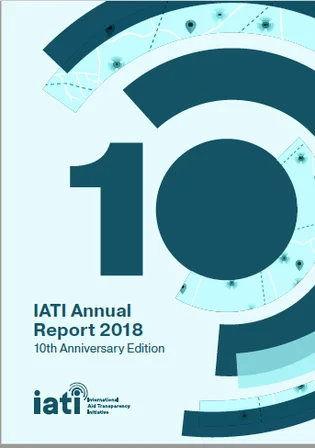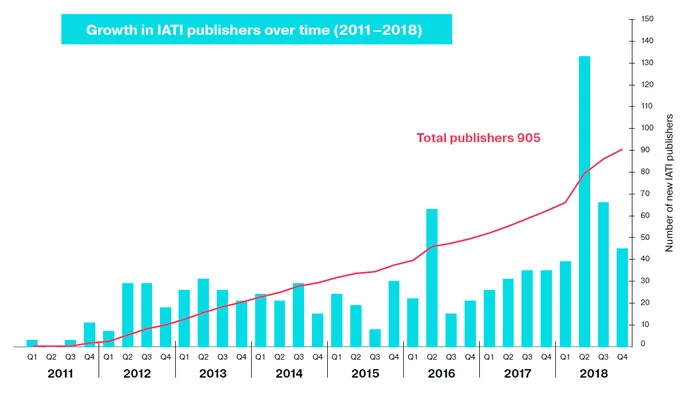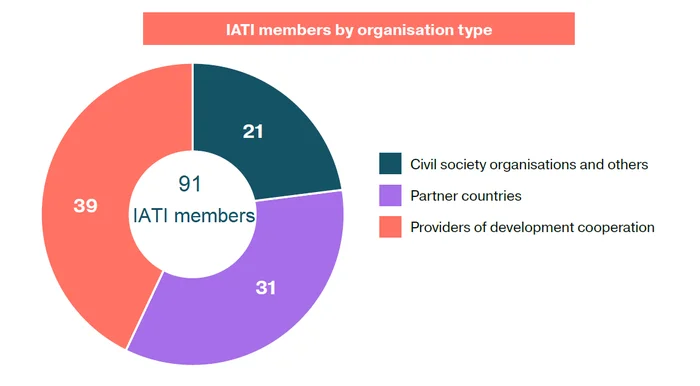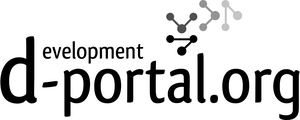IATI Annual Report 2018: a decade of advancing transparency

A special 10 year anniversary edition of the International Aid Transparency Initiative (IATI) Annual Report has been launched today. IATI Annual Report 2018 reflects on the tremendous progress achieved on the transparency and openness of development and humanitarian resources since the launch of the initiative at the Third High Level Forum on Aid Effectiveness in Accra.
One million development and humanitarian projects published
In just a decade, the spending and results on over one million development and humanitarian projects have been published to IATI. In 2011, the UK government became the first to publish data on its projects to IATI. By the end of 2018, US$152 billion of spending was published to IATI by more than 900 governments, multilateral institutions, private sector and civil society organisations.
During the year, there was an impressive 45% (287) increase in the number of IATI publishers and $7 billion more spending was published, compared to 2017.

Growth in membership
IATI was launched in 2008 by 14 founding governments and development agencies, and has since expanded to a membership of over 90 governments, multilateral institutions and civil society and private sector organisations.
Over the years, IATI members have not only played an essential role in funding the initiative, they have also contributed to governance, worked collaboratively to develop the IATI Standard, advocated in global fora for increasing transparency through IATI, and published and used IATI data themselves.

IATI data driving decisions and accountability
In 2012, the Democratic Republic of the Congo was the first recipient government to start using IATI data. Since then there has been a steady increase in governments integrating IATI data into their financial management systems. Through the availability of IATI data, partner countries from Honduras to Madagascar have identified billions of dollars of assistance and hundreds of external organisations operating in those countries that were previously unknown to the government.

IATI’s Annual Report 2018 showed that the number of users accessing IATI data using the online search tool d-portal has increased by 62% in 2018 (compared with 2017).
IATI fund supports data use
In 2018, IATI’s dedicated Data Use Fund financed its first projects to address key challenges set out in IATI’s Data Use Strategy 2017-19. Four projects took place in countries such as Ghana and Uganda to raise awareness, produce new guidance and make further progress towards integrating IATI data into national aid information management systems.
Data quality: much done, much left to do
The IATI Standard was developed to meet the demand from developing country stakeholders for timely, comprehensive and forward-looking information on external resources. Over the years there have been significant improvements in each of these three key data quality components. Here are the key statistics for 2018:
- Timeliness of data remained high: IATI encourages publishers to update their data at least once per quarter. In 2018, timeliness remained high for another year with 97% (US$147 billion) of the total volume of spend being reported by publishers who update their data at least every quarter, of which nearly US$82 billion was reported by publishers who update their data monthly.

The number of publishers reporting precise geographic locations on their activities more than doubled in 2018.
- Comprehensiveness of data: In looking at how comprehensive the data is, ie how much information is published about an organisation’s projects beyond just finances, there was some good news in 2018. The number of publishers reporting precise geographic locations on their activities more than doubled in 2018. However, with a 45% increase in the number of new publishers, this year’s statistics show that new publishers are not yet providing information on all of the IATI Standards’ ‘value added fields’. For example, the overall percentage of organisations publishing the results of their projects and the type of aid involved decreased slightly. More comprehensive data provides more valuable information for data users, and publishers are encouraged to improve the data they publish over time.
- Forward-looking data: In 2018, data published by donors on their future spending plans increased. The amount of forward-looking budget data published two years in advance increased by 24% (up from US$54 billion in 2017 to US$67 billion in 2018). However, the volume of data published one year in advance decreased from US$111 billion in 2017 to US$99 billion. Providing more forward-looking data enables developing country governments, NGOs and others to better plan and coordinate development resources.
Future priorities
The Annual Report 2018 sets out key areas for the next year to improve IATI data and increase its use. By June 30, 2019, all publishers will be encouraged to publish more detailed and user-friendly development and humanitarian data using fields available in Version 2 of the Standard. This forms part of IATI’s support to the humanitarian community of publishers honouring the transparency commitments they have made as part of the Grand Bargain Agreement at the UN World Humanitarian Summit in 2016.
IATI also remains committed to support the publication and use of IATI data on the Sustainable Development Goals, with new guidance being developed by IATI community’s experts.